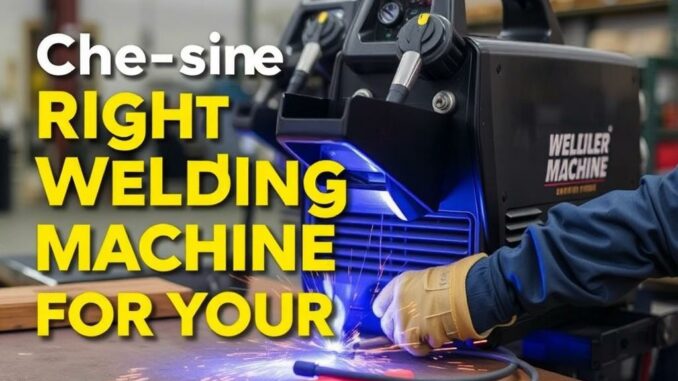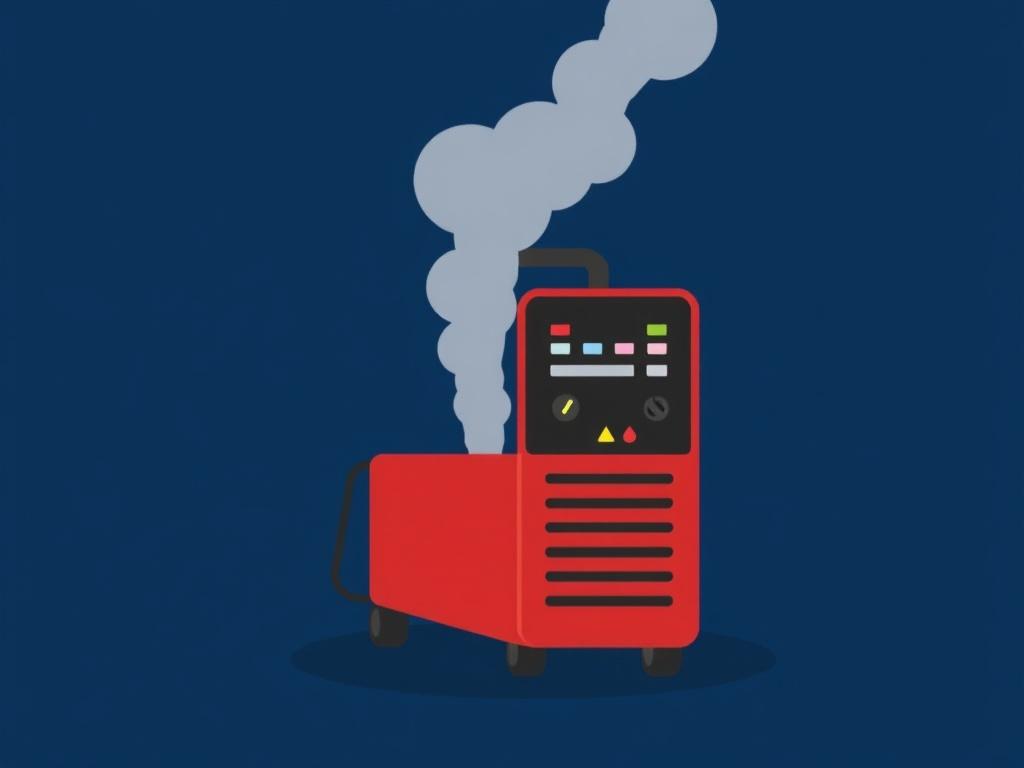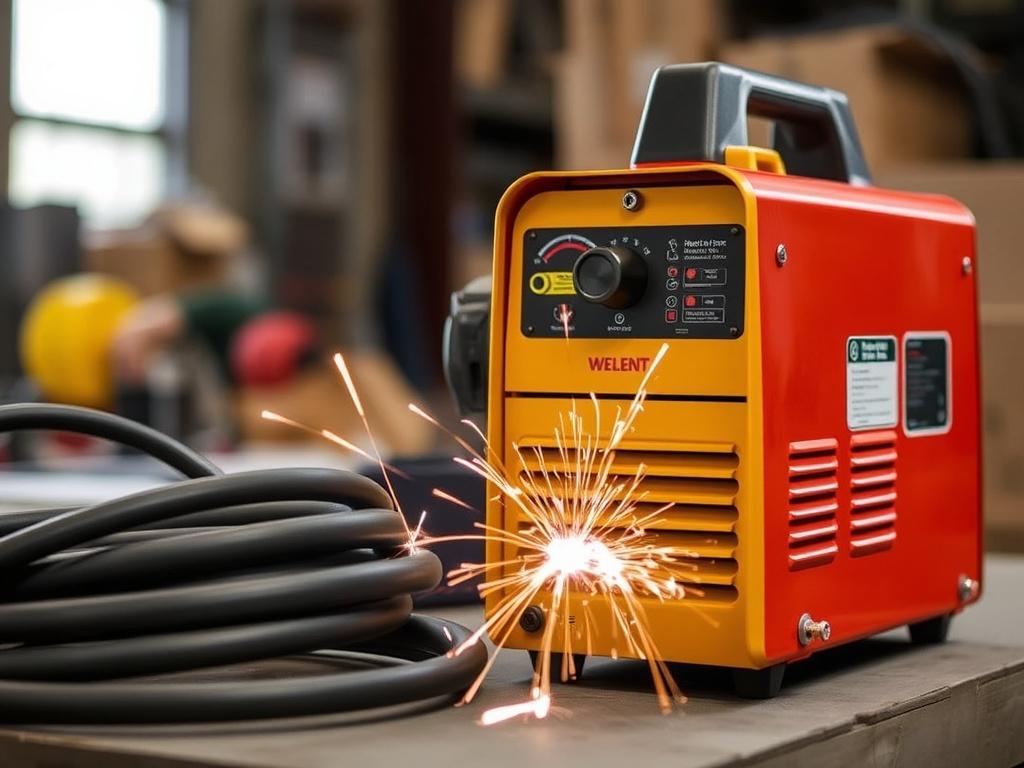
Welcome to the fascinating world of welding! Whether you’re a seasoned professional or just getting started with projects that require joining metals, choosing the right welding machine is essential. Welding machines come in various types, each suitable for different tasks, skill levels, and materials. Picking the perfect one can feel overwhelming, but don’t worry—this comprehensive guide will walk you through every important factor to consider to ensure your welding venture is a success.
Why Choosing the Right Welding Machine Matters
Imagine trying to build a birdhouse or a metal gate with the wrong tools. Just as using inappropriate tools can lead to frustration and poor results, selecting the wrong welding machine can cause headaches, wasted materials, and even safety hazards. A welding machine is the heart of any welding operation: it controls the heat, the arc stability, and ultimately the quality of your welds.
Different projects require different welding machines. You wouldn’t use the same machine to weld delicate jewelry as you would for heavy-duty construction steel. Understanding your project’s requirements, the materials involved, and your skill level will pay off in the quality and durability of your work and your enjoyment of the welding process.
Types of Welding Machines: An Overview
Before selecting a welding machine, it’s important to familiarize yourself with the common types available. Here’s a quick overview of the main welding machine categories:
| Welding Machine Type | Description | Common Uses | Materials | Skill Level |
|---|---|---|---|---|
| Stick Welding (SMAW) | Uses a consumable electrode coated in flux to lay the weld. | Outdoor projects, heavy metals, repairs | Steel, iron, stainless steel | Beginner to Advanced |
| MIG Welding (GMAW) | Uses a wire electrode fed through a gun with shielding gas. | Automotive work, fabrication, light sheet metal | Steel, aluminum, stainless steel | Beginner to Intermediate |
| TIG Welding (GTAW) | Uses a tungsten electrode and shielding gas for precise welds. | High-precision work, thin metals, aerospace | Steel, aluminum, copper, magnesium | Advanced |
| Flux-Cored Arc Welding (FCAW) | Similar to MIG but uses a special wire with flux core. | Construction, heavy fabrication, outdoor welding | Steel, stainless steel | Intermediate to Advanced |
This table gives you a snapshot of the available options. Your project’s scale, materials, and precision needs will influence the welding machine type you should consider.
Key Factors to Consider When Choosing a Welding Machine
Now that you understand the basic types of welding machines, let’s dive into the most important considerations that will determine the best machine for your specific projects.
The Material You Will Weld
Every metal behaves differently under heat and welding techniques. Steel and stainless steel are the most common metals welded using stick, MIG, or TIG processes. Aluminum requires machines capable of TIG or MIG with the right shielding gas. Knowing the metal you’ll work with helps narrow down the welding machines that are compatible with those materials.
Project Complexity and Precision
For heavy, rugged construction, machines like stick welders and flux-cored arc welders excel, as they handle thick materials and outdoor conditions. If your project involves precise, clean welds—say on thin sheet metal or artistic designs—TIG welders offer the control and finesse you need.
Skill Level and Learning Curve
Some welding machines are more user-friendly than others. Stick welders can be a little tricky for beginners due to the need for steady electrode handling. MIG welding machines are typically the best choice for beginners because they are easy to learn and suitable for a wide range of tasks. TIG welding machines, while capable of beautiful welds, require more experience and practice.
Power Requirements and Portability
Depending on where you plan to weld, power availability may influence your choice. Some machines require a 220V outlet and draw more power, suitable for heavy-duty welding. Smaller MIG welders with 110V capability are handy for home workshops and light projects. Also, think about portability—if you need a machine for mobile jobs, weight and transportability are important.
Budget and Long-Term Investment
Welding machines vary widely in price, from budget-friendly hobbyist models to advanced professional-grade equipment. While it’s tempting to go for the cheapest unit, consider the machine’s durability, support availability, and features that will grow with your skills and project demands.
Deep Dive Into Welding Machine Types
Stick Welding Machines
Stick welding machines use an electric current to strike an arc between a consumable electrode rod and the metal being welded. The flux coating on the rod melts to create a shielding gas that protects the weld from contamination. This process is powerful and versatile, making it a favorite for outdoor, heavy-duty work.
If your projects often involve thick steel beams or repairs in rugged locations—like farms or construction sites—a stick welder is a great, cost-effective option. These machines are generally tough, simple to maintain, and can function well even in windy or dirty environments where gas shielding isn’t practical.
MIG Welding Machines
MIG welding machines feed a continuous wire electrode through a welding gun while simultaneously spraying shielding gas to protect the weld pool. This makes it easier to produce clean welds quickly. MIG welders are excellent for beginners, as the process is straightforward and requires less technique compared to stick welding.
They are commonly used in automotive repair, hobby fabrication, and household projects. Because they operate at lower temperatures, MIG welders work well with thin metals without warping them.
TIG Welding Machines
TIG welders offer precise control using a non-consumable tungsten electrode and separate filler rod if needed. The process uses inert gas (usually argon) to shield the joint. TIG welds have a beautiful finish and high strength. They’re ideal for projects requiring fine detail or welding exotic metals.
Though TIG welding requires patience and practice, those dedicated to quality and artistry will appreciate the versatility and control it offers.
Flux-Cored Arc Welding Machines
Flux-cored welding is similar to MIG but uses a hollow wire filled with flux that creates its own shielding gas. This makes FCAW machines perfect for outdoor welding in windy conditions where external gas shielding is problematic.
They often suit construction professionals and heavy industries looking for high deposition rates and portability.
Practical Steps to Choose the Best Welding Machine
Let’s break down a step-by-step approach to selecting the right welding machine based on your unique needs.
- Identify your project type and materials. Write down what metals and thicknesses you’ll commonly weld.
- Assess your environment. Consider whether you’ll weld indoors, outdoors, stationary, or mobile.
- Define your skill level and willingness to learn. Are you a beginner looking for ease of use? Or is precision your priority?
- Set your budget. Determine how much you want to invest upfront and in consumables.
- Review power availability. Know whether 110V, 220V, or multi-voltage machines are suitable.
- Research welding machine models. Check reviews and specifications aligning with your criteria.
- Ask about warranty and support. Good customer service and replacement parts can save you money and frustration later.
Understanding Welding Machine Specifications
Knowing how to read specifications will empower you to compare machines accurately. Here are some important terms:
- Duty Cycle: The percentage of time a welder can run continuously in a 10-minute period before needing to cool down. Higher duty cycles mean more productivity.
- Input Power: The voltage and current requirements (e.g., 110V, 220V).
- Output Amperage Range: The strength of the electrical current the machine can deliver, which affects welding thickness.
- Portability: Weight and dimensions impact how easily the welder can be transported.
- Included Accessories: Some machines come with torches, cables, helmets, and more.
Common Mistakes to Avoid When Choosing a Welding Machine

Choosing a welding machine is a big decision, and certain pitfalls can lead you astray:
- Buying solely based on price: A cheap machine might save money now but cost more in supplies, repairs, and headaches.
- Ignoring the metal types you’ll weld: Some machines are better suited for aluminum; others can’t handle thick steel adequately.
- Neglecting power requirements: Make sure your workshop’s electrical setup supports your welder.
- Overestimating skill level: Starting with a complex TIG machine might discourage beginners.
Recommended Welding Machines for Different Users
To help you get started, here’s a list of welding machines that cater to various user needs:
| User Level | Recommended Machine Type | Example Models | Key Benefits |
|---|---|---|---|
| Beginner Hobbyist | MIG Welder | Hobart Handler 140, Lincoln Electric Easy MIG 180 | Ease of use, affordable, versatile for home projects |
| Advanced Hobbyist / Small Fabrication | TIG Welder | Everlast PowerTIG 200DV, AHP Alpha TIG 200X | Precise control, clean welds, supports various metals |
| Professional Welder | Multi-Process (MIG/Stick/TIG) | Miller Multimatic 215, Lincoln Power MIG 256 | Flexibility, heavy-duty performance, reliable |
| Construction/Outdoors | Stick or Flux Cored | ESAB Rebel EMP 215ic, Lincoln AC-225 Stick Welder | Rugged, withstands harsh conditions, powerful |
Essential Accessories and Safety Gear

Choosing the right welding machine is just part of the journey. Don’t overlook essential accessories and, above all, safety gear. Here’s a checklist to keep you focused and protected:
- Welding Helmet: Auto-darkening helmets provide convenience and better eye protection.
- Protective Clothing: Flame-resistant jackets, gloves, and pants safeguard you from sparks.
- Welding Cables and Connectors: High-quality cables improve efficiency and safety.
- Shielding Gases: If using MIG or TIG welding machines, appropriate shielding gas is crucial.
- Wire and Electrodes: Match the consumables to your welding machine’s specifications and your project’s metal type.
Tips for Getting the Most from Your Welding Machine

Once you’ve chosen your welding machine, here are some friendly tips to boost your welding results:
- Read the Manual Thoroughly: Understanding your machine’s features and settings can prevent costly mistakes.
- Practice Regularly: Welding is an art and skill—you get better with each weld.
- Maintain Your Equipment: Clean cables, check connections, and replace worn parts to keep performance high.
- Adjust Settings for Each Project: Voltage, wire speed, and amperage settings need tweaking depending on metal thickness.
- Ensure Proper Ventilation: Welding fumes can be hazardous; always work in a well-ventilated area.
Conclusion: Finding the Perfect Match for Your Welding Needs
Choosing the right welding machine doesn’t have to be intimidating. By understanding the types of welding machines, analyzing your project requirements, and considering your skill level and budget, you can confidently select a machine that will serve you well for years.
Remember, there’s no one-size-fits-all answer—welding is a broad field with many specialized tools. By investing time in research and matching the welding machine to your needs, you set yourself up for success and safe, satisfying welds. So gather your tools, gear up, and happy welding!
